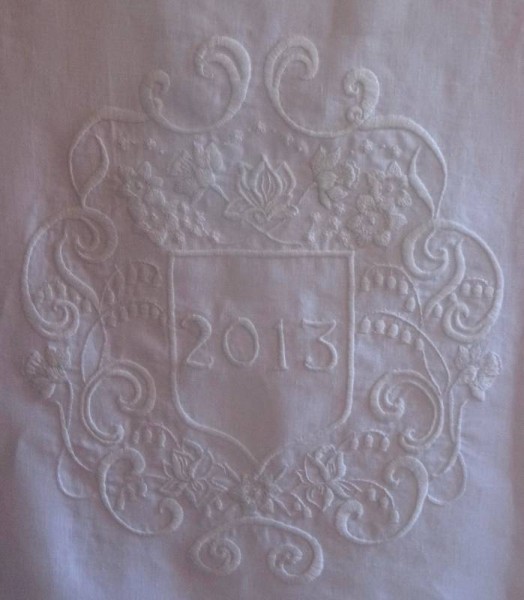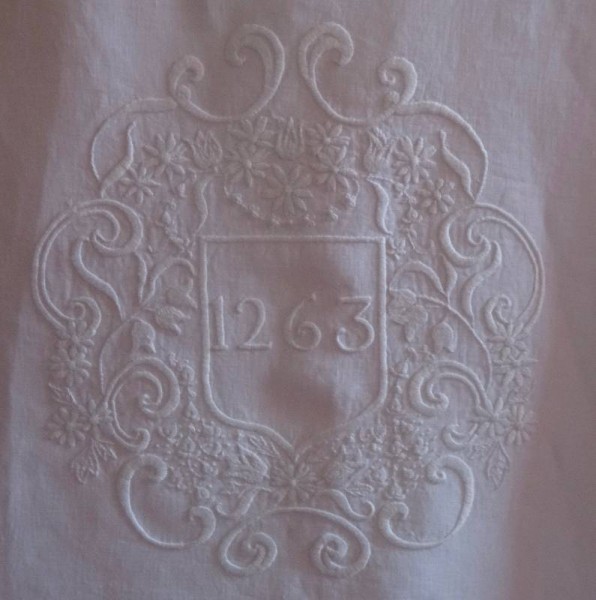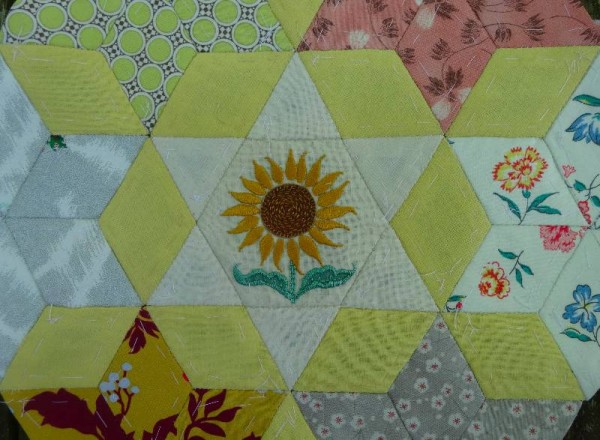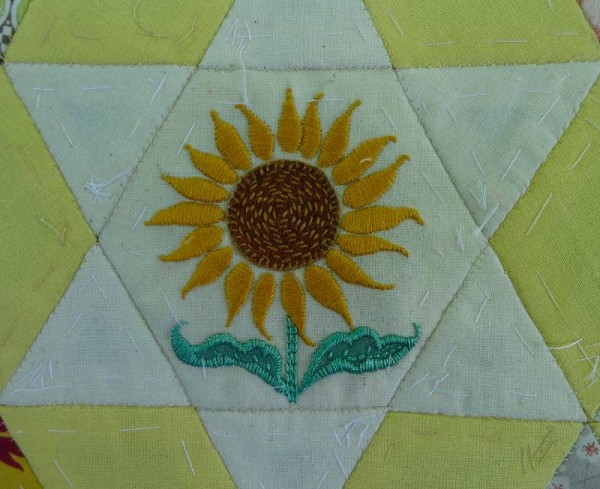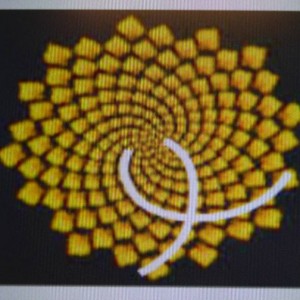Finished! The embroidery on the altar cloth was to commemorate the college’s 750th anniversary – one end has 1263, while the other has 2013. I completed the embroidery on the 2013 end last weekend (although by Thursday I was unable to resist adding a few leaves for the dahlias on the 1263 end). A marathon ironing session ensued yesterday, so today, Saturday saw the delivery and installation of the cloth on the altar (well, yesterday as it is now 10 minutes past midnight).
Determined to keep the cloth as crease free as possible, I folded and interleaved the cloth with clean white bath towels and laid this parcel flat in the empty boot of daughter No 1’s car (the vicar had a wedding) with a heavy sofa cushion placed on top (to prevent the cloth rumpling into a creased pile as the car went up the two hilly bits of road between here and Oxford). Bundled into the car along with 3 adults, a baby and baby paraphernalia were wedged my iron and a long extension cable in case extreme ironing was necessary. Relief was great when the cloth was unrolled from its towelling cocoon and found to be largely crease free.
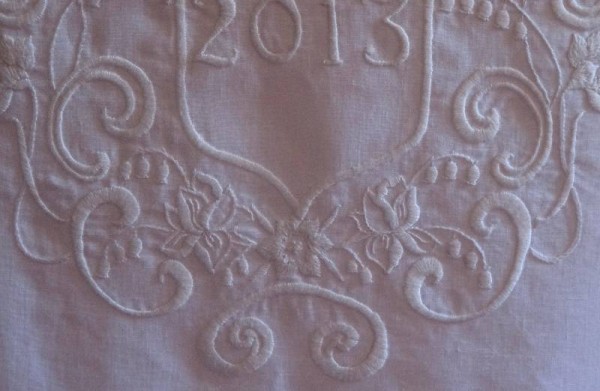
Whitework altar cloth for Balliol Chapel: detail of daffodil & magnolia (hand embroidered by Mary Addison)
The 1263 end is blogged here, where I show the wooden shield now hanging in the Old Library and on which I based the overall design for the altar cloth. The carved flowers included tulips and flowers very like dahlias so I added those to my own design along with wisteria – all 3 flowers do well in Balliol soil.

Whitework altar cloth for Balliol Chapel: details of daffodils, magnolia and lily of the valley (hand embroidered by Mary Addison)
The 2013 end has the curlicues of the shield but with different flowers. Standing by the steps to the dining hall there is a magnificent magnolia tree which has enormous white flower heads. Beneath the Old Library windows in the first quad this year’s bed of mixed daffodils has just finished flowering. Lily of the valley can be found in little groups in the shadier parts of the college grounds. All these three flowers I included in this 2nd end, along with a scattering of forget-me-knot flowers, many of which come up beween the daffofils. Artistic licence has been taken with the flowers which are depicted with differences of scale – the magnolia can be as big as soup plates.

Whitework altar cloth for Balliol Chapel: details of lily of the vallley, daffodils & magnolia (hand embroidered by Mary Addison)
Entering into the chapel I was greeted with a Mozart horn concerto. While I laid the cloth in place on the altar Delius’s Lark Ascending descended from the gallery. My job done, I left the chapel just before a memorial service was due to begin ( so many people were expected that a few chairs were placed in full sight of the embroidery – this will not often happen.) Sunday’s college Holy Communion will see the cloth in use for the first time and the embroidery will revert to its quiet job of just being there.
Update 24 August 2014: Altar complete with altar cloth
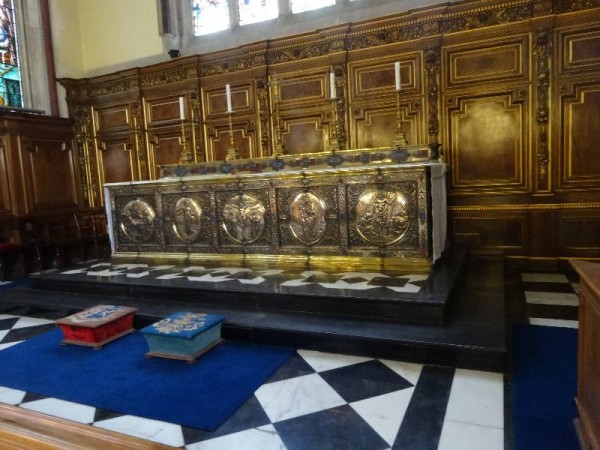
Balliol College Chapel: the altar with just a glimpse of the altar cloth (hand embroidered by Mary Addison)

